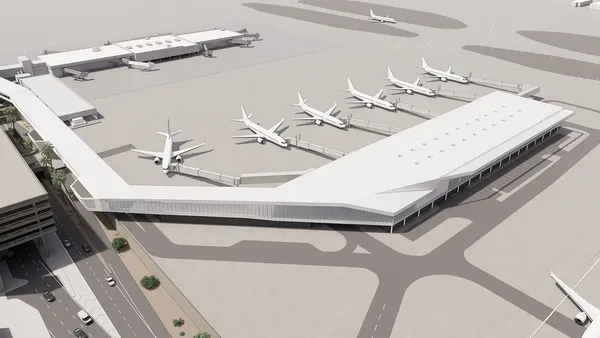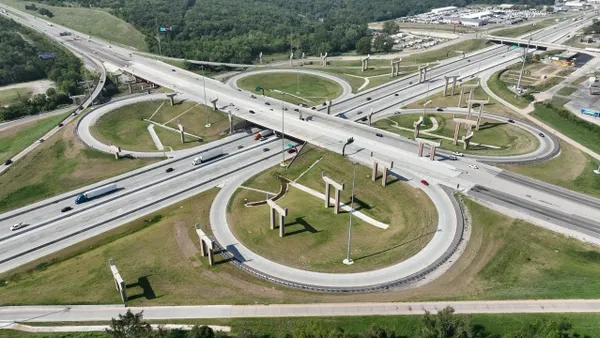Dive Brief:
- The Department of Transportation launched its "Every Place Counts Design Challenge" Wednesday, which involves a competition offering local governments a chance to work with infrastructure experts and change the isolating and economy-killing transportation layouts in their communities, CityLab reported.
- New highways, interstates, airports and industrial districts in the 1950s, 1960s and 1970s were typically placed in, or through, disadvantaged minority neighborhoods, cutting those communities off from employment opportunities, social interaction and access to transportation.
- Four communities will win a DOT design revamp of a transportation project currently underway in their communities, in addition to funding advice and other guidance related to transportation.
Dive Insight:
Applicants whose communities suffer at the hands of ill-planned transportation schemes must show that their qualifying projects, with changes, can alter that predicament. U.S. Secretary of Transportation Anthony Foxx told CityLab that now is the time to pursue alternative ways of implementing the nation's new transportation projects and that he is hopeful the challenge will uncover some strategies that can be used elsewhere in the country.
In another move to encourage innovation, Foxx attended the Hyperloop Pod Competition Design Weekend at Texas A&M University in February, where a winning pod design was selected to be part Hyperloop testing at Elon Musk's SpaceX facility in Hawthorne, CA. During Foxx's appearance at the conference, he said the U.S. should "lean in" to the Hyperloop concept and could potentially help fund its research.
As far as the country's infrastructure is concerned, Foxx is not alone in suggesting that major changes are needed in the way the country approaches design. In a November USA Today opinion piece, Bechtel Group President Brendan Bechtel said that legislators should make fixing the country's crumbling infrastructure a priority. In his plea, he said the U.S. should use Canada as an example, a country that has successfully used the public private partnership (P3) on large-scale projects like light rail extensions. He added that America should focus on "smart investment" that will create jobs and stimulate the economy.














